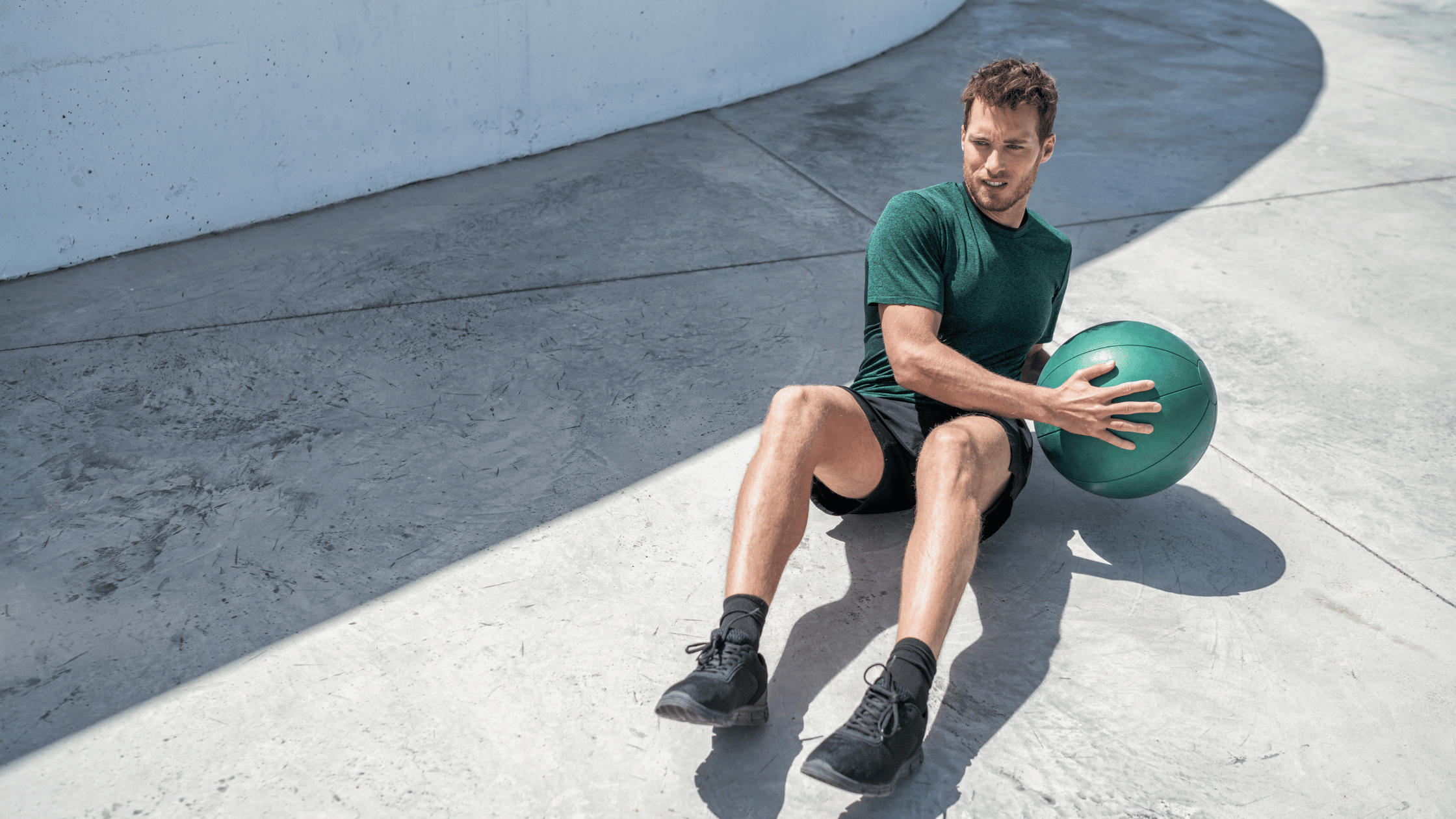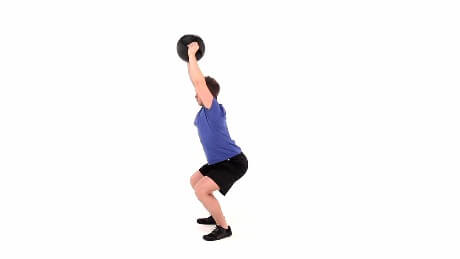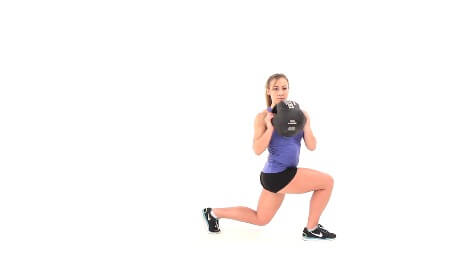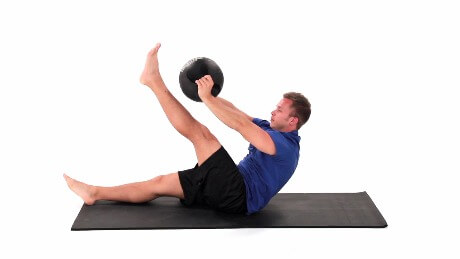The Ultimate Guide to Medicine Balls: Transform Your Workout Routine

Motion Specialist // EW Motion Therapy Homewood
Medicine balls are a versatile and effective tool for enhancing your workout routine. Whether you're a fitness enthusiast or looking to add a new dimension to your exercise regimen, they offer a unique blend of strength, coordination, and versatility. But with any new equipment, you may wonder how to use it to gain the most benefit and prevent injury. A personal trainer can be a great resource to teach you how best to use a medicine ball for your fitness goals - we love helping our training clients at EW Motion Therapy use medicine balls for various workouts. Even if you decide not to train with us, you can still review this guide, which delves into the world of medicine balls, unraveling their benefits, uses, and how they can revolutionize your fitness journey.
Understanding medicine balls: more than just a workout tool
Medicine balls have a rich history dating back to ancient times. Initially used for rehabilitative purposes, they have become a staple in modern fitness regimes. These weighted spheres come in various sizes and weights, catering to different skill levels and workout intensities.
A typical medicine ball is constructed from durable materials like rubber or leather and filled with an evenly distributed weight. Their design allows for easy gripping and maneuverability, making them ideal for various exercises.
Benefits of incorporating medicine balls into your routine
Enhancing core strength and stability
One of the primary advantages of using medicine balls is improving core strength. The dynamic nature of some medicine ball exercises engages multiple muscle groups, particularly the abdominals, obliques, and lower back, leading to enhanced core stability and strength.
Boosting coordination and balance
Medicine ball workouts often involve throwing, catching, and dynamic movements that enhance hand-eye coordination and balance. This is crucial not only for athletes but also for individuals looking to improve their functional fitness.
Versatility in training
Medicine balls are incredibly versatile, whether it’s strength training, cardio, or rehabilitation. They can be integrated into various workout routines, making them suitable for all fitness levels and goals.
Medicine ball exercises
Beginner exercises
- Medicine ball squats: Stand with feet shoulder-width apart, holding the medicine ball at chest level. Lower into a squat position while keeping the ball steady, then push back up to standing, squeezing your glutes at the top of the movement. Enhances lower body strength and stability while engaging core muscles for improved balance.

- Medicine ball Russian twist: Sit on the floor with knees bent, feet lifted slightly, and lean back comfortably. Hold the medicine ball with both hands and twist your torso to touch the ball down on each side, alternating while maintaining balance. Targets and strengthens oblique muscles, enhancing core stability and rotational power.
Intermediate exercises
- Medicine ball slam: Stand with feet shoulder-width apart, lift the medicine ball above your head with both hands and then forcefully slam it down to the ground. Squat to pick it up and repeat, maintaining a strong core throughout the motion.Develops explosive power and cardiovascular endurance while engaging the full body, particularly the core and upper body muscles.
- Medicine ball lunges with a twist: Step forward into a lunge with one leg, holding the medicine ball with outstretched arms. As you lunge, twist your upper body and the ball towards the side of the front leg, then return to center and step back to the starting position. Combines lower body strength work with core rotation, improving coordination and functional movement.

Advanced exercises
- Medicine ball burpees: Holding the medicine ball, perform a standard burpee by placing the ball on the ground, jumping feet back into a plank, then forward, and finally standing up and lifting the ball overhead. Ensure a controlled motion throughout. Integrates full-body strength and cardio, boosting endurance, coordination, and power in a dynamic movement.
- Medicine ball V-up: Lie on your back with your legs straight and hold the medicine ball above your head. Simultaneously lift your legs and upper body off the floor, reaching the ball towards your toes, then slowly lower back down. Focuses on core muscles, particularly the abdominals, enhancing flexibility and core strength.

Here's an example exercise circuit incorporating all of the exercises- please perform these at your own risk and seek professional help if needed.
- Medicine ball squat: 12-15 reps, 30s rest
- Medicine ball Russian twists: 20 reps (10 on each side), 30s rest
- Medicine ball slam: 10-12 reps, 30s rest
- Medicine ball lunges with twist: 10 reps/leg, 30s rest
- Medicine ball burpees: 8-10 reps, 30s rest
- Medicine ball V-up: 12-15 reps, 1 min rest
Safety tips: maximize benefits while minimizing risks
With any piece of workout equipment, using the equipment safely and correctly ensures an injury-free workout.
- Evaluate fitness level: Beginners should start with lighter balls (2-6 lbs) to master form, while advanced users may opt for heavier weights (8 lbs and above) for increased challenge.
- Align with workout goals: Choose lighter weights for speed and agility exercises and heavier ones for strength and power workouts.
- Test control and comfort: Perform basic exercises with different weights. The ideal ball should be challenging yet manageable, allowing you to maintain proper form and control.
- Listen to your body: Ensure the weight doesn't cause discomfort or pain, and adjust as needed based on your physical response during and after exercises.
Medicine balls’ rich history and multifaceted benefits are an excellent addition to any fitness routine. Whether you are a beginner or an experienced athlete, these versatile tools can help enhance your strength, coordination, and overall fitness level. Remember, the key to success lies in choosing the right medicine ball, practicing proper form, and listening to your body. A fitness professional like a personal trainer can be an excellent resource to ensure you are using the equipment correctly. We love helping our training clients at EW Motion Therapy use equipment safely and with proper form so they can work out without fear of injury. If you’re curious about what else personal training can do for your fitness journey, click the button below to download our answers to 20 frequently asked questions.


